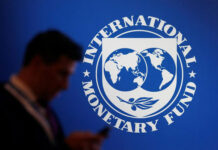By Monem Farooqi
The World Bank has once again restructured the $1.1165 billion Punjab Health Sector Reforms Programme (PHSRP) following its execrable implementation, reveal documents available with Pakistan Today.
According to the documents, the Bank had earlier restructured the programme on April 30, 2014, by handing over the project to the provincial Health Sector Reforms Programme of the Punjab Health Department and released a sum of $17 million to the Punjab government in advance, but now, the second restructuring has made three departments – Policy and Strategic Planning Unit of Primary and Secondary Healthcare Department, Integrated Reproductive, Maternal Neonatal and Child Health Programme, Primary and Secondary Healthcare Department, and Multi-Sector Nutrition Cell of Planning and Development Department – responsible for its implementation. According to the documents, the programme’s objectives were to support the implementation of the Punjab Health Sector Strategy by focusing on the improvement of the coverage and utilisation of quality health services, particularly in low-performing districts of Punjab.
The documents indicate that the restructuring has this time added a new component for making the Punjab government respond and address to the persisting high burden of stunting and malnutrition. The bank has, this time around, made an addition of seven new disbursement-linked indicators (DLIs) to enhance the focus on the results chain and change in the implementation arrangements. In addition to expanding the number of implementing agencies to three, the restructuring has changed the financial management and procurement arrangements for disbursement into three designated accounts for components: change of “eligible” expenditure category for nutrition interventions to IFR based payments, reallocation among the eligible expenditure categories.
Revision of the results framework has adopted indicators related to processes dropped by the government, the addition of two indicators on nutrition; and revised indicators to reflect the agreements for the modified DLIs with the extension of the closing date of the project by December 31, 2018. The documents also offer details about the high risks involved in implementing the project, including unpardonable political influence and governance, a lack of sector strategies and policies, the inability of institutional capacity for implementation and sustainability. Besides, the documents specify substantial and frequent changes in the Department of Health, as the management has severely affected the overall progress of the programme during the project implementation. “There has also been a series of changes in the strategic direction of the health sector strategy after its approval in 2013,” the documents mention.
The programme, comprising of four components stirring side by side for improving the Health Service Delivery by utilising $28.34 million; enhancing efficiency and effectiveness of the health system at $ 44 million, strengthening the provincial department of health’s management capacity, costing $ 22.26 million and the fourth component which will cost $ 26.5 million for improving the capacities in technical areas for equitable health services for all, could progress only 27 per cent since 2013. The documents also clearly mention that “the project had a very slow start with changes in the senior management of the department.” However, last year, the documents state, the pace of implementation improved a little as the health department resolved the pending issues, which led to the achievements of five out of 15 Disbursement Linked Indicators (DLIs), resulting in 27 per cent of the IDA credit being disbursed. Moreover, the documents detail that “the project’s implementation has already started, but this is still far behind the original schedule.” Highlighting the bank’s apprehensions, the documents mention, “There has also been a series of changes in the strategic direction of the Health Sector Strategy after its approval in 2013.
The bank’s follow-up mission in January 2016 found that a number of recommendations identified and agreed during the MTR are still pending, mainly due to the contextual changes in MTR, including the bifurcation of the health department and changes in senior management. Project Development Objective Indicators illustrate that the Punjab government stayed conscious significantly in touching anything which may lead to an increase in the percentage of the user-satisfaction level with government health care services. However, only an upward movement was witnessed in contraceptive prevalence rate, which experienced a peak in achieving the 100 per cent target of a provision of products and services to family planning clients.
























